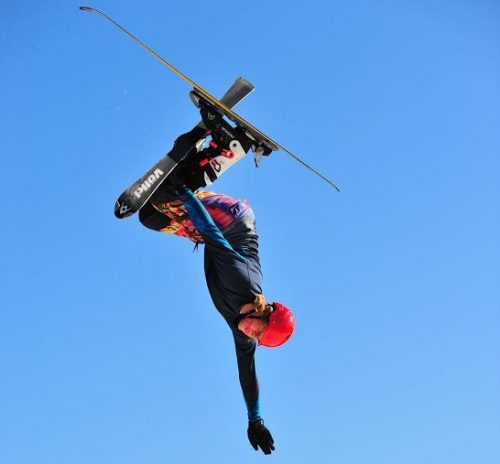Mobilizing multisport with Fortune Freestyle
 If everything is going according to their strategic plan, the athletes coming up through Fortune Freestyle’s long term development program will participate in a wide range of dryland sports, including hiking, mountain biking and rock climbing.
If everything is going according to their strategic plan, the athletes coming up through Fortune Freestyle’s long term development program will participate in a wide range of dryland sports, including hiking, mountain biking and rock climbing.
Because of cooperative scheduling with other teams, they may compete in sports such as hockey or volleyball. And though in the past they’ve been invited to pick between either slope or moguls skiing, they’re now being encouraged to do both.
All of this to ensure they have the most well-rounded athletes possible.
“From the very get-go, we want to ingrain in our kids that we want them to have a love of this sport for the duration of their lives,” board vice president Natasha Quesnel told Sport for Life.
“Our commitment through our strategic plan is to focus on our multisport and multi-discipline programming. That means letting the young kids in particular train in both disciplines, it means not specializing young and recognizing that freestyle skiing is a multidimensional sport. Each discipline makes you stronger in your preferred skiing style.”
To accomplish this culture change, they had to start with the coaches, who had a tendency to specialize themselves. Many were sent to new courses so they could streamline their organizational priorities and follow the Freestyle Canada curriculum that encourages multi-discipline. And instead of demanding a time commitment from the kids that might make some participants balk, they’ve made an effort to coordinate schedules so their athletes can participate in other activities such as cross-country skiing and parkour.
“It’s about getting them to see that all fitness is wonderful and will feed you into being a better athlete,” she said.
One of their latest endeavours is the creation of a Dual Discipline Athlete Award, piloted last year with the help of their provincial sport organization Freestyle Ontario, in which they recognize athletes who chose to train and compete in both disciplines. She believes having the older kids appear as role models will encourage the younger athletes to try doing both disciplines as well.
Quesnel attributes much of their success to program director Heather Ross-McManus, one of Sport for Life’s long-term development experts.
“Heather doesn’t think short term. She’s always thinking about the big picture, long term. She is someone who has the expertise in Sport for Life values, who knows how to connect with clubs as an organization and say ‘look, these are the values we’re supposed to be embracing’,” she said.
“She is the brains, and she has fostered this commitment to multisport in our coaches, our parents and our board members, so the philosophy trickles all the way down to the kids.”
Sport for Life’s Carolyn Trono thinks the work Fortune Freestyle is doing is a great example of how clubs and programs can work together as catalysts for change, moving away from early specialization. She envisions a future in which all Canadian ski clubs embrace a holistic approach to athlete development, letting them participate fully in a number of different pastimes.
“These programming changes may seem minor, but they all have long-term implications such as avoiding burnout, reduction of overuse injuries and hopefully higher retention in sport and physical activity. I applaud Fortune Freestyle’s efforts to make multi-sport a reality in their community. They are a leading example of how a community sport program can move away from specialization and toward a more balanced approach to the sport.”


